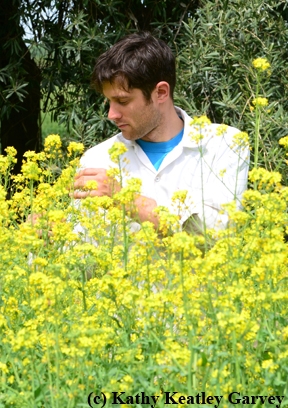
You wouldn't know it if you were to visit the two rapini patches in front of the Harry H. Laidlaw Jr. Honey Bee Research Facility on Bee Biology Road, University of California, Davis.
“The bees love the rapini,” said Laidlaw manager and staff research associate Billy Synk, who planted the seeds given him by Project Apis m.
Project apis m., a moniker derived from Apis mellifera, the scientific name of the European honey bee, funds and directs research to enhance the health and vitality of honey bee colonies while improving crop production. It's based in Paso Robles, Calif. Take a look at the organization's website: "We've infused over $2.5 million into bee research since our inception in 2006 to provide growers with healthier bees resulting in better pollination and increased crop yields. We have personal relationships with the nation's commercial beekeepers and with the top bee scientists in the country."
"We fund research studies, purchase equipment for bee labs at our universities, support graduate students and provide scholarships to young bee scientists to encourage their pursuit of science-based solutions to honey bee challenges."
Its eight-member board includes beekeepers and industry leaders. Extension apiculturist Eric Mussen of UC Davis is a longtime scientific advisor.
And rapini? It's a green cruciferous vegetable from the mustard family. The leaves, buds and stems are edible and often served in restaurants throughout the world. If you were in Italy, you'd eat the cimi di rapa or rapini. In Naples, it's known as friarielli and sometimes broccoli di rapa, according to Wikipedia. If you were in Rome, broccoletti. And in Portugal and Spain, grelos.
The bees know it as simply food for their colonies. Good stuff. (In addition to rapini, PAm encourages folks to plant lovers, vetch, allysum, and native wildflowers as bee pasture.)
One thing's for certain: If you plan to participate in the UC Agriculture and Natural Resources' pollinator count for a three-minute period on Thursday, May 8 your eyes will tire from counting all the bees in the rapini!
Like to participate? See the UC ANR's website, Day of Science and Service. You can also photograph pollinators and post the images on the website for all to see and enjoy.
Attached Images:
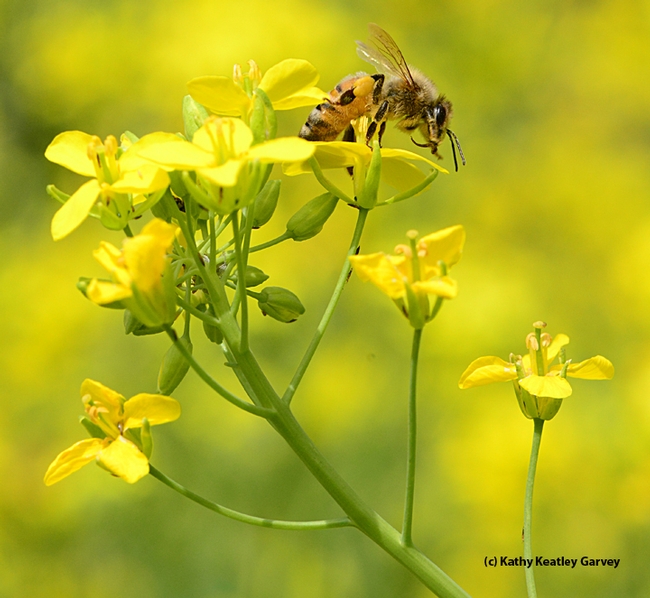
A honey bee foraging on rapini at the Harry H. Laidlaw Jr. Honey Bee Facility. (Photo by Kathy Keatley Garvey)
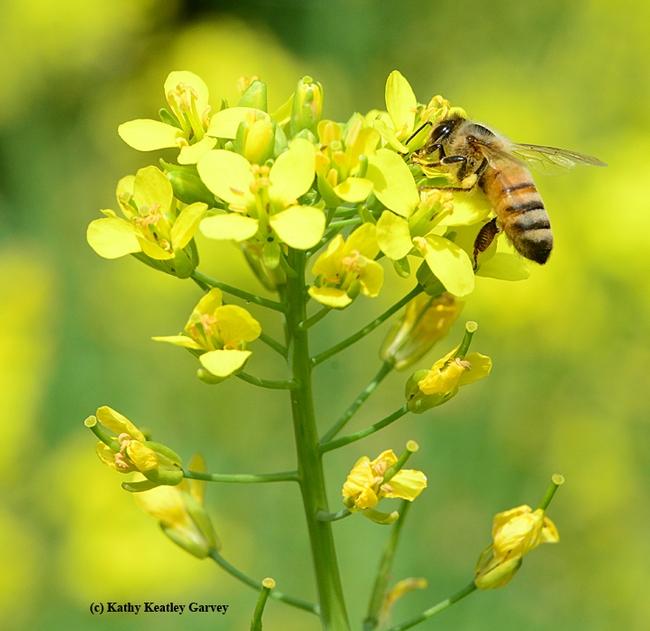
Honey bee takes a liking to the rapini. (Photo by Kathy Keatley Garvey)
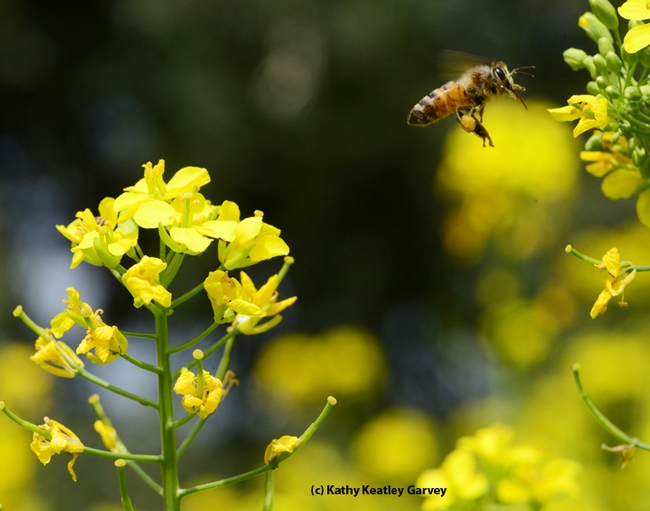
Multi-tasking honey bee cleaning its tongue and packing its pollen load. (Photo by Kathy Keatley Garvey)
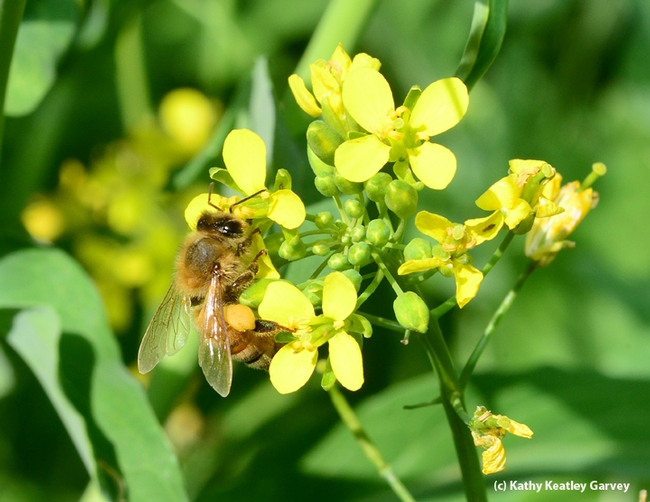
A large pollen load. (Photo by Kathy Keatley Garvey)